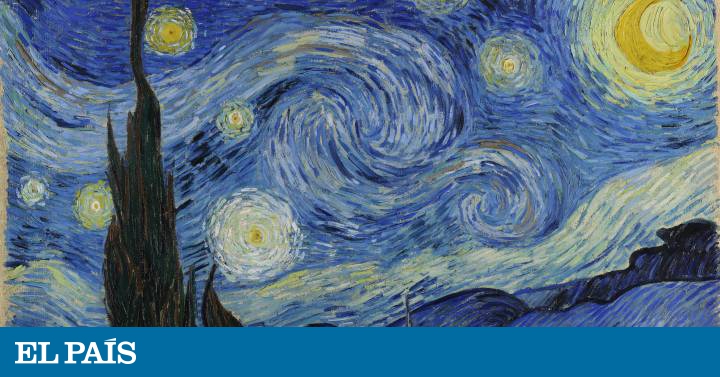"The waves of Hokusai are claws, the boats are trapped in them, you can feel it," Vincent Van Gogh writes to his brother, on September 8, 1888. He responds to Theo, who must have been struck by The Great Wave off Kanagawa , the stamp that the Japanese painter published five decades before this writing. Vincent was in Arles, but he already knew the image. The Dutch painter was impressed by the "simplicity" of the Eastern masters. "Japanese art is something like the primitive ones, like the Greeks, like our ancient Dutch, Rembrandt, Hals ...", he had warned Theo a few months before attacking himself. Soon he was portrayed with a bandaged ear and some Japanese prints in the background. The unfortunate chapter ends in the Saint-Rémy-de-Provence mental sanatorium, where Vincent entered voluntarily and in which he experienced a fleeting calm that allowed him to focus on the landscape surrounding the hospital.
Although he defines the sanatorium as a "menagerie", he says that the "change of environment" has been "good" for him. And so much: in one week, in June 1889, he painted five essential landscapes of Provence in his catalog. Two of them are preserved in the Museum of Modern Art (MoMA) in New York: Olives with Les Alpilles in the background and The Starry Night , possibly the most famous landscape in modern painting, and in which the British historian Martin Bailey sees a evident relation with The great wave of Hokusai in the swirling movement of the sky, which rushes over the hills. Vincent explains that the emotional strength of Hokusai's color lies in its incorrectness and says that he shares this resource with the Japanese artist, although Van Gogh is much more ornate and complicated in his technique and his vision of nature. The harmony of blues, greens and whites - with yellow flashes - is forged in the fight between them. In 1941 the MoMA exchanged The Starry Night , held by the collector Georgette van Stolk, for two works by Cézanne and one by Toulouse Lautrec. It was the first Van Gogh to enter the New York museum and proof of the international interest that his work acquired in the 1940s, during the Second World War.
A year before his death, Van Gogh recognized himself in full activity, as a being absorbed in his work and a lover of "country" nature. That year Toulouse-Lautrec paints La toilette , but his country nature seems "purer" to him than that of the suburbs and cabarets of Paris. “Cypresses always worry me. I would like to do something like the sunflower fabrics, because it surprises me that nobody has done them as I see them yet, ”he tells Theo in one of the hundreds of letters that remain, like an implacable chronicle that Van Gogh ended up writing for posterity. His doctor allows him to go out during the day to paint the field surrounding the center and tells his brother that he is very well there, who reads Maupassant, Zola, Shakespeare (in English) and Voltaire. That "life is spent in the garden" and that does not seem "so sad". He doesn't want to go live in a Paris pension. He prefers to maintain his isolation and calm.
Virtual tour: Van Gogh's Starry Night (1889), preserved at MoMA in New York, in Google Arts and Culture.

